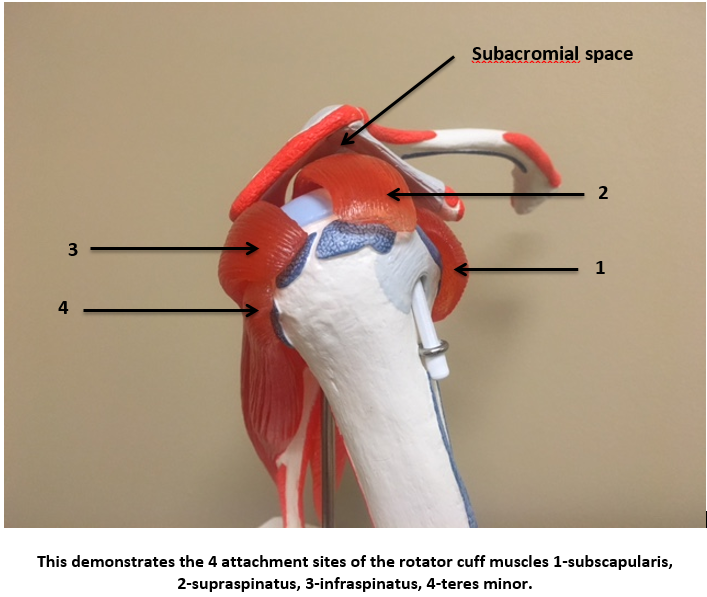By: Spiro Papas, MD
Rotator cuff problems are very common and can result from degenerative tears of the rotator cuff or traumatic events can cause tears to the rotator cuff. Many patients can have a combination of both. These can occur in both males and females over the age of 40, but can also occur in younger age groups where there is a great strain to the rotator cuff because of activity. The rotator cuff is made of four muscles that attach to the humerus in a circumferential pattern as seen in the anatomic drawing.
The rotator cuff muscles are important for stabilizing the shoulder and initiating motion so the bigger muscles around the shoulder can actively participate in the proper motions of the shoulder. When an injury occurs to the rotator cuff muscles, either a strain or even a tear of one or more of the muscles, there is an imbalance in shoulder function. The larger the tear and the more rotator cuff tendons that are involved, the greater the problem. Small injuries and strains can often be treated with physical therapy, injections, along with medications. Significant disruptions in the rotator cuff often require surgical repair. Significant advances have been made over the last number of years regarding care of the shoulder, particularly the rotator cuff, with arthroscopic surgical procedures. Development of suture anchors particularly have helped in treating rotator cuff tears effectively and recreating the anatomy that was present prior to the injury. Often the associated pathology needs to be dealt with in addition to the rotator cuff tears. Often this includes subacrominal decompression which relieves pressure on the rotator cuff by clearing out some of the bone above the rotator cuff so that it can better heal. In addition, distal clavicle resections may become necessary if significant pain is present at the junction of the clavicle and the acromion which is called the AC joint. The biceps tendon also may need to be addressed. It often develops a tendonitis and can also sublux in the groove where it typically lives. When it subluxes or develops a significant synovitis, it often has to be released and relocated. If it is of good enough quality to relocate, a biceps tenodesis is performed. These additional areas are depicted in the illustration below.
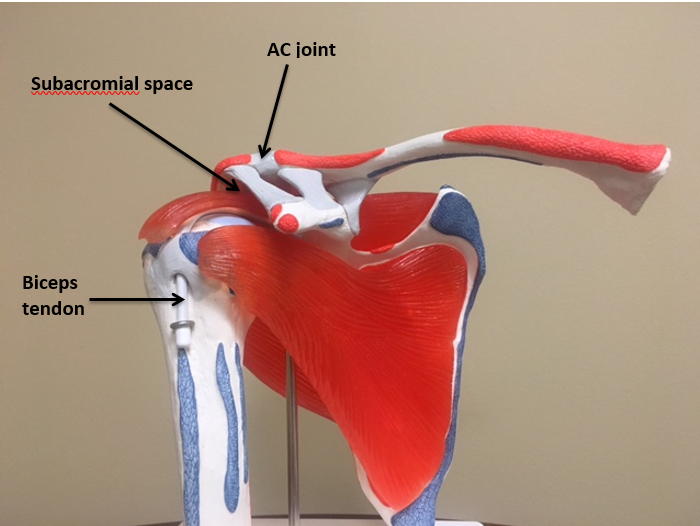
Arthroscopic surgery is a mainstay treatment for repairing the rotator cuff and the associated pathology to the shoulder joint. It typically involves an outpatient procedure done under a regional anesthetic, just numbing the shoulder region, but may require sedation or a general anesthetic. Small incisions are placed about the shoulder in order to facilitate access to the structures that need to be repaired through these small arthroscopic incisions. Good visualization of the entire rotator cuff and other pathology in the shoulder is possible so a very accurate repair can be performed; much better than previous open surgical procedures. Typical procedures associated with the rotator cuff repair include a subacrominal decompression, distal clavicle resection, and biceps tenodesis. One or many of these procedures may be necessary depending on the findings from a physical exam and/or the MRI performed prior to the procedure. In some patients who cannot have an MRI of the shoulder, a CT arthrogram or ultrasound is necessary to confirm the diagnosis. Once conservative measures such as therapy and injections fail, surgery becomes necessary. A traumatic rotator cuff tear is typically treated more urgently then a degenerative tear because they do much better with more urgent treatment.
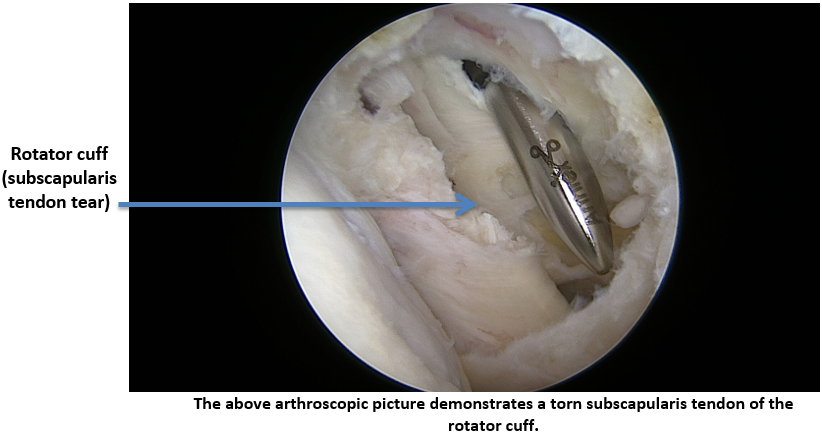
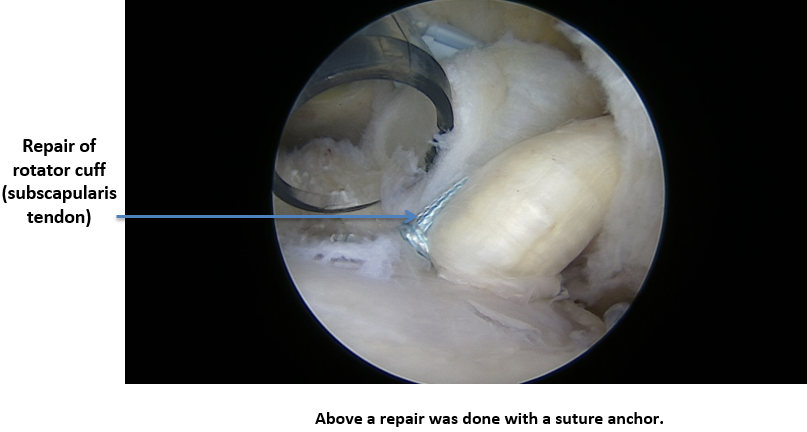
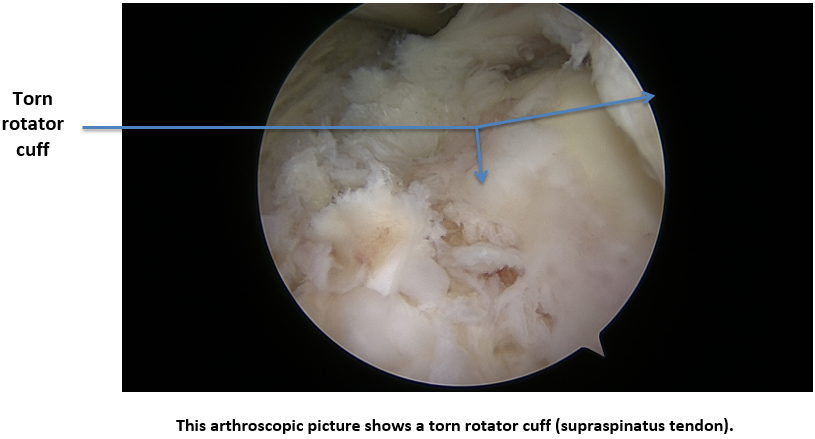
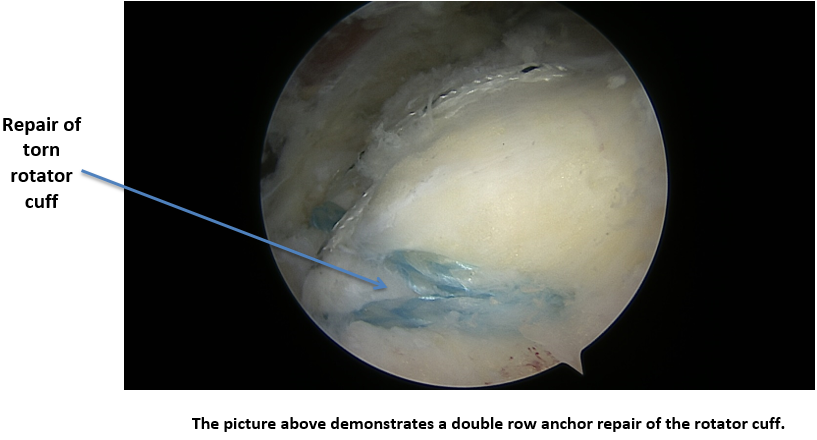
In some cases where a patient has had a neglected rotator cuff tear that they have been living with for years, the tissues may not be repairable. Sometimes degenerative cuff tears are repaired and they subsequently fail because of the poor tissues involved, the patients still have a deficiency in the rotator cuff. In these cases, a relatively new procedure can be performed which is called a “superior capsule reconstruction” of the rotator cuff using a dermal allograft to substitute for the rotator cuff as long as there is not significant arthritis in the joint. This can all be performed with arthroscopic techniques. The reason for treating significant tears of the rotator cuff is to prevent arthritis from developing in the joint which typically occurs if the patient has a longstanding problem with a torn rotator cuff.
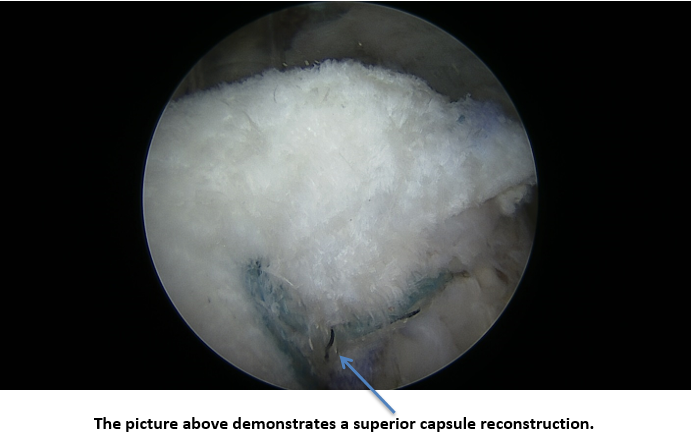
When a patient has a longstanding torn rotator cuff for a number of years and may or may not have had attempts at repair, but ends up with a deficient rotator cuff for a number of years, significant arthritis in the joint occurs. When this occurs, they typically have significant pain with attempted motion of the shoulder above waist level, but particularly above chest level. This becomes quite debilitating for patients. The reason for treating rotator cuff repairs early is to try to avoid this from occurring. When this does occur, the only other option for a patient is a, reverse total shoulder replacement, which is the best option since it substitutes for the rotator cuff and also treats the arthritic joint. A joint resurfacing can also be performed, but that does not substitute for the rotator cuff and the patient still has functional deficits in the shoulder.
Rotator cuff tears can be more effectively treated with modern arthroscopic surgical techniques. Patients have to be willing to invest the time necessary for healing afterwards in order to attain a good result. Depending on the size of the tear and quality of the tendon, return to full unrestricted activity may take 6 months or longer. Results of rotator cuff surgery have dramatically improved over the past number of years. Early treatment of these problems is quite beneficial to the patient.

